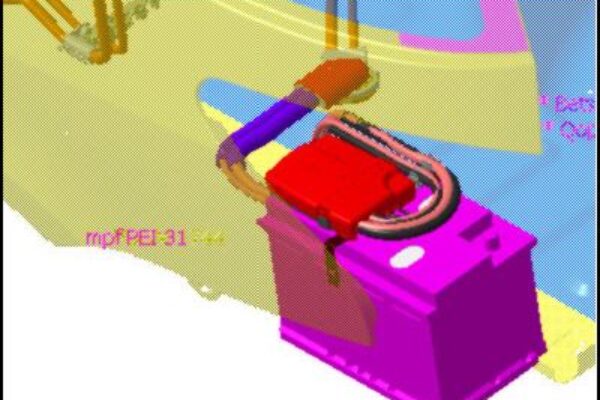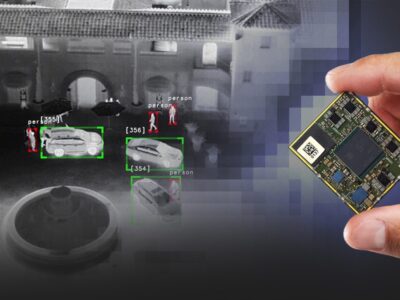
Aluminum busbar halves weight of battery power cabling
Of the roughly 3,000 meters of cable that today’s motor vehicles contain, the connection between the battery and the engine is one of the bulkiest single cables. The potential for saving weight on this component is all the greater when the battery is located in the rear of the vehicle. Leoni has therefore replaced the copper battery cable with a round aluminium busbar, which can be fitted directly on or underneath the vehicle’s chassis. It has a variable diameter depending on the application and is insulated with a halogen-free polyethylene jacket. Depending on the type of vehicle, it can have a length of more than four metres and be deployed in either a single or twin track version.
The aluminium busbar weighs only 40 to 60 percent as much as the common copper cable. The saving is made possible by the fact that aluminium has significantly less specific gravity than copper. In absolute terms, the weight saving can be up to three kilograms, which contributes to lowering CO2 emissions.
In addition, there is the distinctive characteristic that the increased diameter, which aluminium conductors would normally necessitate, can be avoided with larger cross sections. Its solid structure and a special manufacturing process considerably reduce the busbar’s diameter. Compared with a multi-core copper cable with a 15.5 millimetre diameter, the aluminium busbar of identical conductivity has a diameter of less than 14 millimetres. The technology thus also helps to address the issue of diminishing installation space.
To ensure a perfect fit to the vehicle’s chassis, the busbar is designed CAD-controlled in a three-dimensional space. Its round shape makes continuous bending in all directions easily possible; something that other solutions available on the market do not permit. This facilitates inside bend radii that are no larger than the bar’s diameter.
Handling the rigid busbar is easier than is the case with a limp cable. The carmaker thereby saves time on installing in the vehicle. The component is connected at both ends by means of a clever but easy to operate fitting system and in between fixed to the chassis with special brackets.
Ultimately, this new technology provides another, considerable benefit: taking all materials, components, tools and processes into account, there is a cost saving versus the conventional copper solution. Leoni is currently working on the prototypes for the first mass-production contract involving a European manufacturer. The vehicle will probably be launched in 2013.
On its IAA stand, Leoni will also present other alternative materials that could replace the universal conductor of copper. The use of bronze (CuSn), copper-clad steel (CCS), copper-clad aluminium (CCA) as well as alloys such as copper-silver (CuAg) and copper-magnesium (CuMg) can reduce cable weight by more than 60 percent. Along with lightweight construction, Leoni will also display its range of products and services in the electromobility sector.
For more information, visit www.leoni.com.
 If you enjoyed this article, you will like the following ones: don't miss them by subscribing to :
eeNews on Google News
If you enjoyed this article, you will like the following ones: don't miss them by subscribing to :
eeNews on Google News




